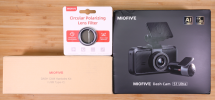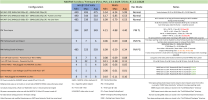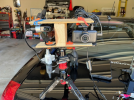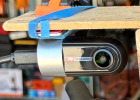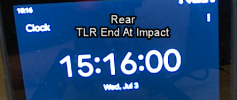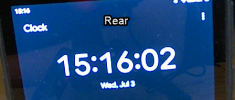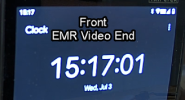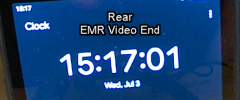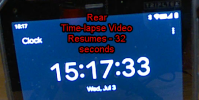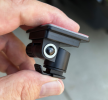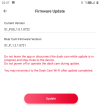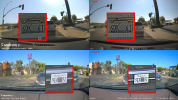I've been working with MIOFIVE via email regarding the issues I've discovered while testing the S1 Ultra. The OTA firmware update feature was not working in the Android app, but I found out that the MIOFIVE app was not be updated like I thought. It turns out that MIOFIVE's older Android app was not getting updated due to a change in accounts used to publish the updates from MIOFIVE. I downloaded the "current" Android MIOFIVE app and the OTA firmware update feature detected firmware updates for the front and rear cameras. The MIOFIVE iOS app was properly detecting the OTA update info.
As of 23-July-2024, the most recent firmware updates are:
Front: S1_PUS_1.0.1.0605
Rear: S1_P_1.2.1.0514
Rear Camera Labeling - Upside Down
I reported an issue regarding the printed labeling on the rear camera being upside down compared to the default orientation [rotation] setting in the firmware settings. MIOFIVE internally changed the firmware in the most recent update to account for the labeling on the rear camera.
Front Camera Mount Looseness
In previous posts, I mentioned the front camera mount allowed the front camera to move around a bit when driving on bumpy roads or when stopped and the engine has some amount of idle shake/vibration. MIOFIVE is working on this issue with their supplier to resolve the problem.
Front Camera Video - Over-sharpened
The front camera video footage has evidence of over-sharpening. You can really see this in the objects inside of the car as the front camera moves around due to the looseness in the front camera mount. MIOFIVE states the over-sharpening has been addressed in the next firmware release (not available yet).
Rear Camera Video - Time-Lapse Parking Mode - 31 Second Delay
When the S1 Ultra goes into time-lapse parking mode, there is a 30 to 31 second delay before any rear camera time-lapse video starts recording. This is currently being investigated by MIOFIVE.
Rear Camera Video - Quality
The rear camera video is overly influenced by a subtle reflection from a black cloth I have present in the rear deck area (behind the rear seats). The video also looks a bit soft/fuzzy. Another 2K rear camera positioned next to the S1 Ultra's rear camera does not have those issues. MIOFIVE is working on this and they believe it will be addressed with the next firmware release.
Daytime Video Samples
On my weekly drive to the local post office, I gathered some sample daytime footage from the S1 Ultra's front and rear cameras.
S1 Ultra Front Camera - 3840x2160 30 fps
S1 Ultra Rear Camera - 3840x2160 25 fps
